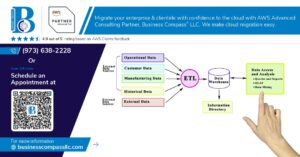💳 Seamless payments: a game-changer for your website or just another headache? If you’ve ever wrestled with integrating a payment system, you know the struggle is real. Enter Stripe, the payment processing powerhouse that promises to make transactions a breeze. But how do you actually implement it?
Picture this: Your online store is ready to go, products perfectly displayed, but there’s one crucial piece missing – a reliable way to accept payments. That’s where Stripe comes in, offering a robust solution that can elevate your user experience from good to great. However, the path from Stripe signup to successful integration isn’t always smooth sailing.
In this comprehensive guide, we’ll walk you through the entire process of designing and implementing Stripe payment integration with your website. From understanding the basics to optimizing the payment experience, we’ve got you covered. Get ready to transform your website into a payment-processing powerhouse and watch your conversion rates soar! 🚀
Understanding Stripe Payment Integration
Benefits of Stripe for website payments
Stripe offers numerous advantages for website payments, making it a top choice for businesses of all sizes. Here are some key benefits:
- Easy integration
- Secure transactions
- Global reach
- Customizable checkout
- Extensive documentation
| Feature | Benefit |
|---|---|
| Multiple payment methods | Increased conversion rates |
| Fraud prevention | Reduced chargebacks and losses |
| Subscription management | Simplified recurring billing |
| Detailed analytics | Better business insights |
Key features of Stripe API
Stripe’s powerful API provides developers with a robust set of tools to implement seamless payment processing:
- RESTful API design
- Webhook support for real-time event notifications
- Extensive library support for various programming languages
- Tokenization for secure handling of sensitive data
- Customizable UI elements for seamless integration
Compatibility with different platforms
Stripe’s versatility extends to its compatibility with various platforms and technologies:
- E-commerce platforms: Shopify, WooCommerce, Magento
- Content Management Systems: WordPress, Drupal, Joomla
- Web frameworks: Ruby on Rails, Django, Laravel
- Mobile platforms: iOS, Android
- Static site generators: Jekyll, Hugo, Gatsby
This wide-ranging compatibility ensures that businesses can integrate Stripe regardless of their chosen technology stack. Now that we’ve covered the fundamentals of Stripe payment integration, let’s move on to planning your integration strategy.
Planning Your Stripe Integration
A. Defining payment flow requirements
When planning your Stripe integration, the first step is to define your payment flow requirements. This crucial process involves mapping out the entire payment journey for your customers. Consider the following key aspects:
-
Payment types:
- One-time payments
- Recurring subscriptions
- Metered billing
-
Currency support:
- Single currency
- Multiple currencies
-
Customer experience:
- Seamless checkout process
- Mobile responsiveness
- Payment method options
| Requirement | Options |
|---|---|
| Payment Types | One-time, Recurring, Metered |
| Currency Support | Single, Multiple |
| Customer Experience | Seamless, Mobile-friendly, Multiple payment methods |
B. Choosing between Stripe Checkout and Custom Form
After defining your requirements, decide between Stripe Checkout and a Custom Form:
-
Stripe Checkout:
- Pre-built, hosted payment page
- Quick implementation
- Limited customization
-
Custom Form:
- Full control over design
- Seamless integration with your site
- More complex implementation
Consider your technical resources and branding needs when making this decision.
C. Assessing security needs
Security is paramount in payment processing. Evaluate your security requirements:
- PCI DSS compliance
- Data encryption
- Fraud prevention tools
- 3D Secure authentication
D. Setting up a Stripe account
Finally, set up your Stripe account:
- Register on the Stripe website
- Verify your identity and business details
- Set up your bank account for payouts
- Configure webhook endpoints for real-time event notifications
With these steps completed, you’ll be well-prepared to move forward with your Stripe integration implementation.
Designing the Payment Interface
Creating a user-friendly payment form
When designing a user-friendly payment form, simplicity and clarity are key. Here’s a list of essential elements to include:
- Clear form labels
- Visible error messages
- Progress indicators
- Autofill support
- Minimal required fields
Implement a single-page checkout to reduce friction and increase conversion rates. Use a clean layout with ample white space to enhance readability.
Implementing responsive design for mobile devices
With the increasing use of mobile devices for online purchases, a responsive design is crucial. Consider the following:
| Mobile-Specific Features | Benefits |
|---|---|
| Touch-friendly buttons | Easy interaction |
| Collapsible sections | Saves screen space |
| Larger input fields | Reduces errors |
| Simplified navigation | Improves user flow |
Utilize CSS media queries to adjust the layout and font sizes for different screen sizes, ensuring a seamless experience across devices.
Integrating Stripe Elements for secure input fields
Stripe Elements provides pre-built UI components for collecting sensitive payment information securely. To implement:
- Include the Stripe.js library in your HTML
- Create a payment form in your HTML
- Initialize Stripe Elements in your JavaScript
- Mount the card element to your form
- Handle form submission and token creation
This approach ensures PCI compliance and reduces your liability by keeping sensitive data off your servers.
Customizing the look and feel to match your brand
Maintain brand consistency by customizing Stripe Elements:
- Match colors to your brand palette
- Use consistent typography
- Incorporate brand-specific icons or logos
- Adjust padding and borders to fit your design
Remember to test your customized form across different browsers and devices to ensure a consistent experience for all users.
Now that we’ve covered the design aspects, let’s move on to implementing the server-side integration for processing payments securely.
Implementing Server-Side Integration
Setting up Stripe API keys
To begin implementing server-side integration with Stripe, you’ll need to set up your API keys. These keys are essential for authenticating your requests to the Stripe API and ensuring secure communication between your server and Stripe’s services.
-
Obtain API keys from Stripe Dashboard:
- Log in to your Stripe account
- Navigate to the Developers section
- Locate your API keys (Publishable and Secret keys)
-
Securely store your API keys:
- Use environment variables
- Never hardcode keys in your codebase
- Keep Secret key confidential
| Key Type | Usage | Security Level |
|---|---|---|
| Publishable Key | Client-side | Public |
| Secret Key | Server-side | Confidential |
Handling payment intents and charges
Payment intents are central to processing payments with Stripe. They represent the intent to collect payment from a customer and allow you to track the payment lifecycle.
-
Create a payment intent:
- Set the amount and currency
- Specify payment method types
- Add metadata for order tracking
-
Confirm the payment intent:
- Use client-side SDK for dynamic confirmation
- Handle server-side confirmation for specific use cases
-
Capture the payment:
- Automatic capture for immediate charges
- Manual capture for auth-and-capture flows
Implementing webhooks for real-time updates
Webhooks allow your server to receive real-time updates from Stripe about various events, such as successful payments or failed charges.
-
Set up webhook endpoint:
- Create a dedicated URL on your server
- Configure the endpoint in Stripe Dashboard
-
Verify webhook signatures:
- Use Stripe’s library to validate incoming webhooks
- Prevent unauthorized access and ensure data integrity
-
Process webhook events:
- Handle different event types (e.g., payment_intent.succeeded)
- Update your database and trigger necessary actions
Managing error handling and edge cases
Robust error handling is crucial for a smooth payment experience and maintaining the integrity of your financial transactions.
-
Implement try-catch blocks:
- Catch and log Stripe API errors
- Provide user-friendly error messages
-
Handle common edge cases:
- Insufficient funds
- Expired cards
- 3D Secure authentication failures
-
Implement idempotency:
- Use idempotency keys for retrying failed requests
- Prevent duplicate charges on network failures
Now that we’ve covered the server-side integration, let’s move on to testing and debugging your Stripe implementation to ensure everything works smoothly.
Testing and Debugging
Using Stripe’s test mode and dummy data
When testing your Stripe integration, it’s crucial to use Stripe’s test mode and dummy data. This allows you to simulate transactions without processing real payments. Here’s how to effectively use these tools:
- Activate test mode in your Stripe dashboard
- Use Stripe’s test card numbers for various scenarios
- Simulate different currencies and payment methods
| Test Card Number | Description |
|---|---|
| 4242 4242 4242 4242 | Successful payment |
| 4000 0000 0000 0002 | Card declined |
| 4000 0000 0000 3220 | 3D Secure authentication |
Conducting thorough payment flow testing
To ensure a smooth payment experience, conduct comprehensive testing of your payment flow:
- Test successful payments
- Simulate declined transactions
- Verify error handling
- Check webhook functionality
- Test refund and dispute processes
Debugging common integration issues
When troubleshooting your Stripe integration, focus on these common issues:
- Incorrect API keys
- Mismatched webhook signatures
- Currency conversion errors
- Incomplete customer information
Use Stripe’s logging tools and error messages to identify and resolve these issues quickly.
Ensuring PCI compliance
Maintaining PCI compliance is critical for secure payment processing. Follow these steps:
- Use Stripe Elements or Checkout for secure card collection
- Implement proper data handling and storage practices
- Regularly update your integration to use the latest Stripe libraries
- Conduct security audits and vulnerability assessments
By thoroughly testing, debugging, and ensuring compliance, you’ll create a robust and secure Stripe integration for your website. Next, we’ll explore how to optimize the payment experience for your users.
Optimizing the Payment Experience
Implementing one-click payments for returning customers
One-click payments significantly enhance the user experience for returning customers. By securely storing payment information, you can streamline the checkout process, reducing friction and increasing conversion rates.
| Feature | Benefit |
|---|---|
| Saved payment methods | Faster checkout |
| Tokenization | Enhanced security |
| Customizable UI | Seamless integration |
To implement one-click payments:
- Use Stripe’s Customer API to store customer information
- Implement Stripe Elements for secure card capture
- Utilize Stripe’s Payment Intents API for dynamic authentication
Adding support for multiple currencies
Supporting multiple currencies expands your global reach and improves customer satisfaction. Stripe’s multi-currency feature allows you to accept payments in various currencies while settling in your preferred currency.
- Implement dynamic currency conversion
- Display prices in the customer’s local currency
- Use Stripe’s exchange rates for accurate conversions
Integrating subscription billing options
Subscription billing can provide a steady revenue stream and increase customer lifetime value. Stripe’s Billing API offers robust tools for managing recurring payments.
Key subscription features:
- Flexible billing cycles
- Proration handling
- Automatic invoice generation
Enhancing fraud prevention measures
Implementing strong fraud prevention measures protects both your business and customers. Stripe provides advanced fraud detection tools that can be customized to your needs.
Fraud prevention strategies:
- Utilize Stripe Radar for machine learning-based fraud detection
- Implement 3D Secure authentication for high-risk transactions
- Set up custom rules based on your business logic
By optimizing these aspects of the payment experience, you’ll create a more efficient, secure, and user-friendly checkout process, ultimately driving higher conversion rates and customer satisfaction.
Launching and Maintaining Your Stripe Integration
Performing final checks before going live
Before launching your Stripe integration, it’s crucial to perform a series of final checks to ensure everything is working seamlessly. Here’s a checklist to guide you through this process:
- Test all payment scenarios
- Verify webhook configurations
- Check security measures
- Review error handling
- Confirm compliance with Stripe’s guidelines
| Check | Description |
|---|---|
| Payment Scenarios | Test various payment methods, currencies, and amounts |
| Webhooks | Ensure proper configuration and handling of Stripe events |
| Security | Verify SSL certificates and PCI compliance |
| Error Handling | Test error messages and fallback mechanisms |
| Compliance | Review integration against Stripe’s best practices |
Monitoring transactions and analytics
Once your integration is live, it’s essential to keep a close eye on transactions and analytics. Stripe provides powerful tools to help you monitor your payment system:
- Stripe Dashboard: Offers real-time transaction data and detailed reports
- Stripe Analytics: Provides insights into payment trends and customer behavior
- Stripe Sigma: Allows for custom SQL queries on your Stripe data
Regularly reviewing these metrics will help you identify potential issues and optimize your payment process.
Keeping your integration up-to-date with Stripe updates
Stripe frequently releases updates to improve security, add features, and enhance performance. To maintain a robust integration:
- Subscribe to Stripe’s developer newsletter
- Regularly check the Stripe changelog
- Test your integration in Stripe’s test mode after major updates
- Plan for deprecations and migrate to new API versions when necessary
Scaling your payment system for growth
As your business grows, your payment system needs to scale accordingly. Consider the following strategies:
- Implement caching mechanisms to reduce API calls
- Optimize database queries for faster transaction processing
- Use Stripe’s Billing for recurring payments and subscriptions
- Leverage Stripe Connect for marketplace or platform business models
By focusing on these aspects, you’ll ensure your Stripe integration remains efficient, secure, and capable of handling increased transaction volumes as your business expands.
Integrating Stripe payments into your website is a powerful way to enhance your e-commerce capabilities and provide a seamless payment experience for your customers. By following the steps outlined in this guide, from understanding Stripe’s functionality to launching and maintaining your integration, you can successfully implement a robust payment system that meets your business needs.
Remember that payment integration is an ongoing process. Regularly test your system, stay updated with Stripe’s latest features and security measures, and continually optimize the payment experience based on user feedback. With a well-designed and properly implemented Stripe integration, you’ll be well-positioned to grow your online business and provide a secure, efficient payment process for your customers.




















